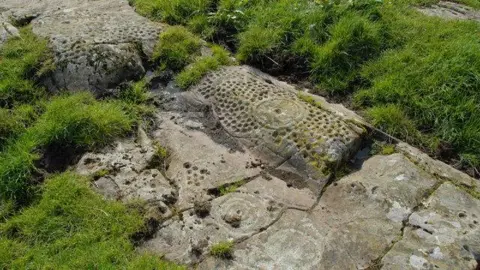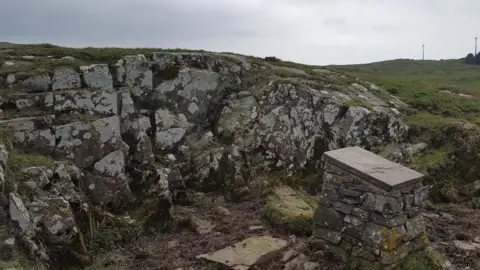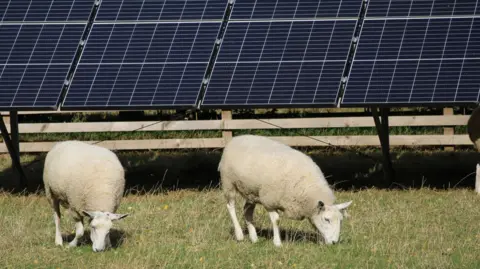Large solar farm approved near Bronze Age rock art
 Jon Holland
Jon HollandPlanning permission has been granted for construction of a large solar farm located near "nationally significant" Bronze Age rock art.
Dumfries and Galloway Council's planning committee approved the 43-hectare (106 acre) project at Little Drum Solar Farm.
The proposed development will be constructed just over one mile (1.8km) south east of Kirkcudbright - but will not be visible from the town due to rolling hills.
The nearest solar panel will be located 250m (820 ft) from the rock art, according to a report by planning officers.
There are multiple "non-designated archaeological areas" and features present on or near the site.
This includes an inaccessible monument indicating the location of the rocks.
The solar array will provide approximtely 36MW of electricity and include a 12MW battery storage facility.
 Peter Mackenzie
Peter MackenzieA planning report by council officers said the monument was not currently publicised or the subject of any formal access arrangements.
However, as part of the solar farm's approval, subject to conditions, a path will be constructed to the monument for the first time.
The developer is required to complete the path within three months of the farm becoming operational.
'National significance'
The report by planning officers recognised the monument as "one of the finest of its type in Scotland and very important in terms of the period in history it represents".
It said the area was "the second densest concentration of (bronze age) rock art in Scotland (after Kilmartin Glen in Argyll) and therefore of national significance".
Despite this Historic Environment Scotland gave no objection to the project - after an initial holding objection.
The preservation body said given the 250m distance from the monument and the solar panel height and position, the project did not raise "historic environment issues of national significance."
However, the construction of the farm will not be able to start until an investigation has taken place and been signed off by the council.
Although there was no reason to object on "heritage grounds" the council archaeologist said ground examinations should take place to explore potentially undiscovered archaeological features of the area.
 Getty Images
Getty ImagesConstruction of the solar farm and battery plant is expected to last nine months; the developer is required to begin construction within three years.
As part of the application, the solar farm will be operational and provide power for a 40-year lifespan once complete.
The developers also plan to include "landscaping and biodiversity enhancement measures" around the solar farm - it will clear the area of invasive species in favour of native trees, grassland, flower meadow and hedgerows.
